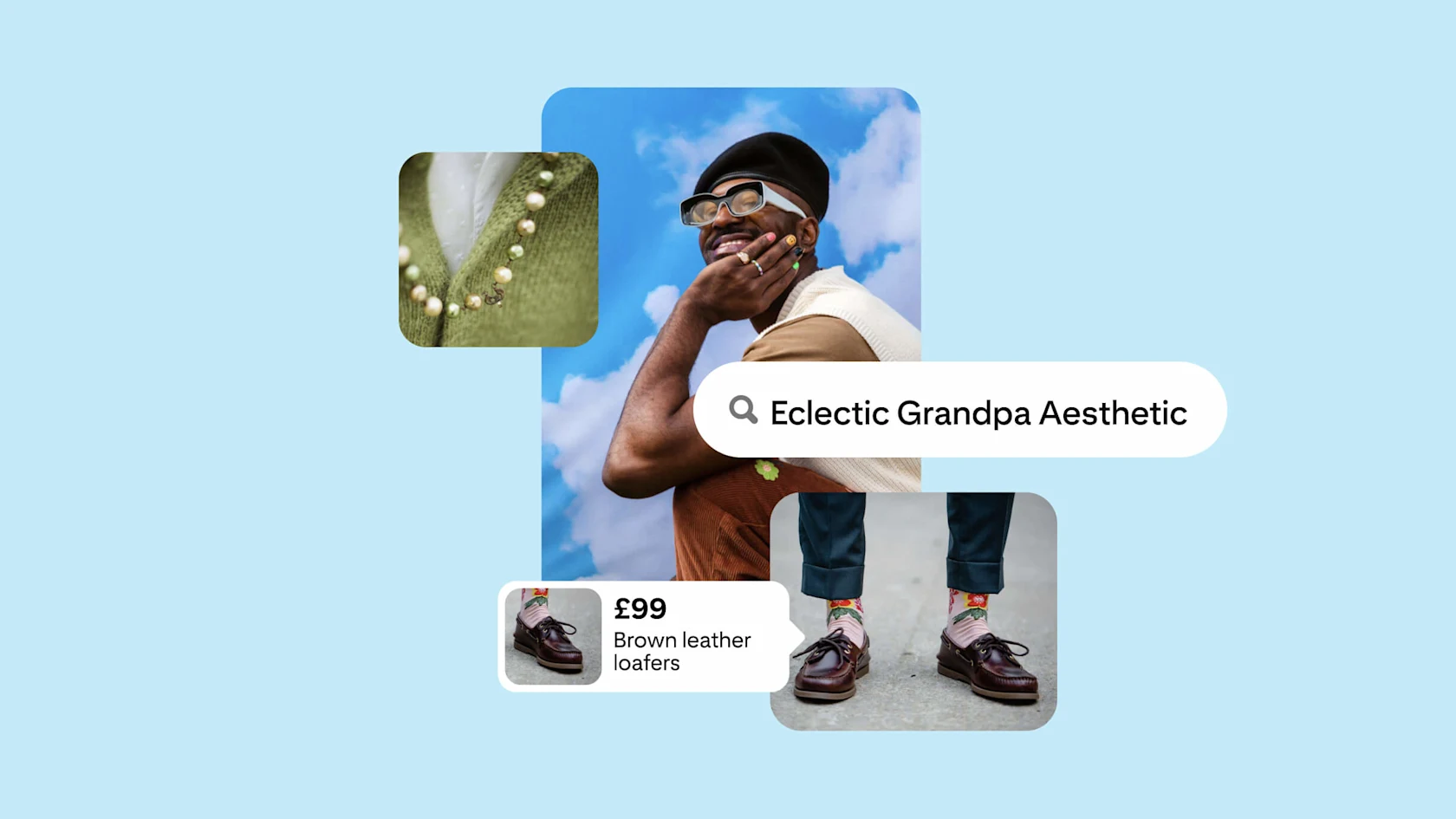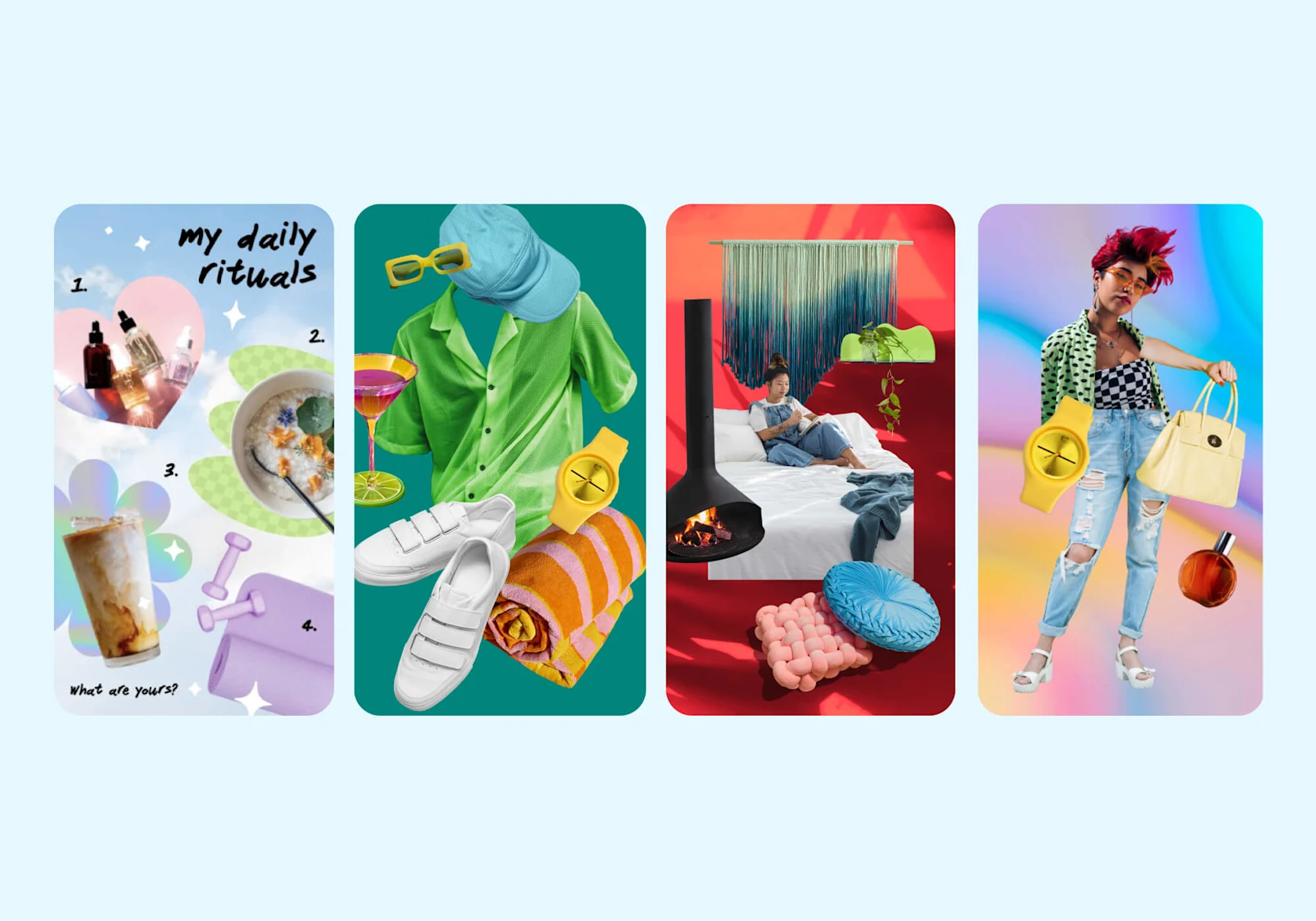The future of shopping: How AI enables self-expression and niche marketing
30 April 2024 — Julie Towns

AI, signal loss and a new generation of shoppers with zero tolerance for yesterday's tactics are enough to give any seasoned marketer an existential crisis. But here's the thing: at Pinterest, we think there’s opportunity among these challenges.
Gen Z holds the key. They're not just a new segment to reach; they're charting the future—already leaving their mark today by influencing other demographics, including those with more spending power. And we have a front-row seat to this evolution.
That’s because on Pinterest, AI fuels our personalisation engine, but it's people’s intent signals that give it real direction, unlocking insights born from genuine engagement. Here, we’ll show you what we’ve learned from the most creative generation yet, to build a marketing strategy that will help to shape the future.
Niche is the norm
Forget building brands for mass appeal—91% of people aged 18 to 25 say there is no “mainstream” pop culture anymore.1 Instead, the internet is flooded with niche aesthetics like Eclectic Grandpa. These aren't just trends; they're subcultures and deeply personal expressions of identity. In fact, neuroscientist Olivier Oullier—who joined me on stage at One to One Monaco recently—has said that one of the defining characteristics of Gen Z is their ability to resist categorisation or traditional trends, emphasising their independence, creativity and willingness to challenge established norms, whereas Millennials may have exhibited certain cohesive trends or behaviours as a group.
But while this trend of non-conformity and diversity within Gen Z presents challenges, if brands pay attention they’ll find lovingly curated Pinterest boards that aren't just for inspiration; they're detailed shopping wishlists. AI gives both brands and individual consumers incredible power here. By analysing preferences, it can help people further refine their taste, suggesting products they might adore but would never have found on their own. When people nurture a deeper understanding of their tastes, it makes it easier to go from "I love this" to actually making a purchase. Our stats back this up: when someone saves something to a board, they're 7x more likely to buy it.2
Curation is consumption
Gen Z wants to actively participate in content creation. Collages are a perfect example, where people can take cutouts of their favourite products and bring all-new ideas to life. And it’s not just Gen Z diving into the design process. People of all ages are saving Collages at triple the rate of other types of Pins.3 The action item for brands is to give people the tools to co-create, and recognise that seemingly "out there" content might just be the next hot thing. AI will be crucial for keeping up – personalised content can enhance engagement and inclusivity in ways that fuels boundless creativity.

Inclusion is the default
Gen Z has higher standards than any generation before them. They expect (and rightfully so) to see themselves reflected in the brands they choose. This isn't about token gestures, it's about weaving inclusivity into the fabric of your brand, by offering diversity in products and marketing efforts. On Pinterest, we give people the tools to find beauty and fashion results that match their skin tone, hair texture and body type. And it’s driving real engagement. For example, people who used our skin tone ranges search feature had a 40% higher rate of engagement than those that didn’t.4
Back to the big picture
Third-party cookies are on their way out and that means brands need a new game plan. Investing in partners with access to high-intent, first-party signals is a non-negotiable. It's time to ditch one-size-fits-all marketing tactics of the past and embrace this moment of reinvention.
Throw out your current playbook and consider experimenting where it makes sense for your company. AI can be your ally—not necessarily for inventing the next viral campaign, but for decoding the nuanced behaviours and preferences of this next generation. Most importantly, don't try to go it alone. Gen Z is setting the pace for the future of shopping—invite them into the process and be prepared to learn as much as you teach.
The time for "wait and see" is over—it's time to start experimenting, learning, and building a marketing strategy as dynamic as the shoppers of tomorrow. Pinterest can be your guide.


